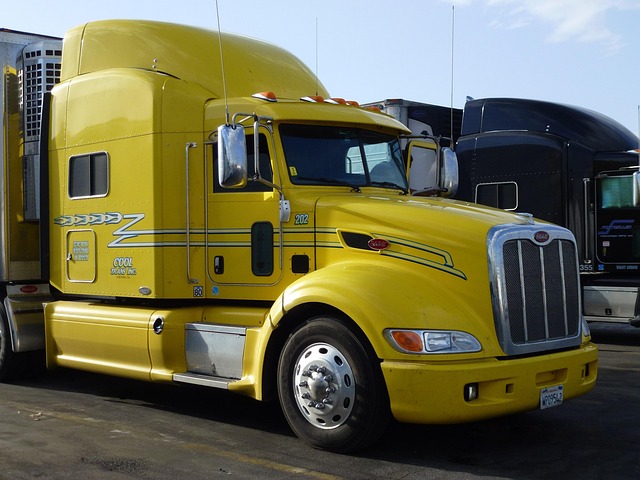Looking to register your car in California? This comprehensive guide walks you through the process, ensuring a smooth transition. From understanding key requirements to gathering essential documents and performing a step-by-step DMV VIN verification, we’ve got you covered. By the end, you’ll be armed with all you need to submit your application, pay fees, and receive your California vehicle registration papers promptly.
- Understand California Car Registration Requirements
- Gather Necessary Documents for Vehicle Registration
- Perform DMV VIN Verification Step-by-Step
- Submit Application and Pay Fees at the DMV
- Receive Your California Vehicle Registration Papers
Understand California Car Registration Requirements

Before registering your car in California, it’s crucial to understand the state’s specific requirements. The California Department of Motor Vehicles (DMV) mandates several key steps for car registration, including a thorough inspection and verification process. One essential component is the DMV vin verification, which ensures that your vehicle matches the information on its unique Vehicle Identification Number (VIN). This step helps prevent fraud and ensures that all vehicles on California roads are legitimate and safe.
Additionally, you can streamline this process with a mobile vin inspection or mobile vin verifier service, offering convenience by allowing the check to be conducted at your location. These services utilize advanced technology to swiftly and accurately perform the VIN verification, fitting seamlessly into today’s digital era. Remember that adhering to these requirements is not just about compliance; it’s also about ensuring the safety of everyone on California’s roads.
Gather Necessary Documents for Vehicle Registration

Before you start the registration process, ensure you have all the required documents for a smooth experience. The California Department of Motor Vehicles (DMV) requires specific paperwork to verify your vehicle’s identity and ownership. One crucial step is completing a dmv vin verification, which involves checking the Vehicle Identification Number (VIN). This process can be done through a mobile vin verifier or by scheduling a mobile vin inspection.
Gathering these documents early will save you time at the DMV. You’ll need proof of ownership, typically a title document, as well as valid identification like a driver’s license. Additionally, prepare any necessary forms related to liability insurance and vehicle registration fees. A vin inspection ensures that your car meets safety standards, so it’s an essential part of the documentation process for a successful vehicle registration in California.
Perform DMV VIN Verification Step-by-Step

Performing a DMV VIN (Vehicle Identification Number) verification is a crucial step in registering your car in California. Here’s a step-by-step guide to help you navigate this process seamlessly. First, gather all necessary documents such as your vehicle’s registration papers, proof of insurance, and identification. Then, visit the California Department of Motor Vehicles (DMV) website to ensure you meet the eligibility criteria for registration.
Next, initiate the VIN verification process either online or in-person at a DMV field office. If opting for a mobile vin inspection, consider using authorized third-party services that can perform a quick and accurate check on your vehicle’s history and specifications. The DMV will cross-reference your VIN with their databases to gather important information about the car’s past ownership, accident history, and any outstanding issues. Once the verification is complete, you’ll receive a report detailing this information, which will aid in accurately registering your vehicle.
Submit Application and Pay Fees at the DMV

Once you’ve gathered all necessary documents, it’s time to submit your application and pay the required fees at the DMV. This crucial step involves filling out the vehicle registration form, which can usually be done online or in-person. You’ll need to provide details such as your personal information, vehicle specifications, and proof of insurance. Along with this, a DMV VIN verification is essential, ensuring the accuracy of your vehicle’s identification number (VIN).
You can opt for a mobile vin verification service if you prefer a more convenient approach. These services allow you to complete the VIN inspection remotely, saving you time and effort. Alternatively, many DMV locations offer on-site vin inspection services, making it easier to register your car without any hassle. Remember to review the fee schedule beforehand to avoid any surprises during the payment process.
Receive Your California Vehicle Registration Papers

After completing the registration process at the California Department of Motor Vehicles (DMV), you’ll receive your official California vehicle registration papers. These documents are crucial and should be kept secure, as they verify your vehicle’s ownership and are essential for future reference. The packet typically includes a registration certificate, which details your vehicle’s information, such as its make, model, year, and unique Vehicle Identification Number (VIN).
To ensure the authenticity of your vehicle, consider utilizing a mobile VIN inspection service or a vin inspection tool provided by trusted organizations. This process involves checking the VIN on your car against state records to confirm its history and ensure it hasn’t been reported as stolen or had any significant damage. A mobile vin verifier can be a convenient option, offering on-site verification for added peace of mind.
Registering a car in California involves understanding specific requirements, gathering essential documents, and successfully completing the DMV VIN verification process. By following these steps outlined in the article, you’ll be well on your way to securing your vehicle’s registration. Remember, accurate documentation and a thorough understanding of the process are key to ensuring a smooth experience during your California car registration.
